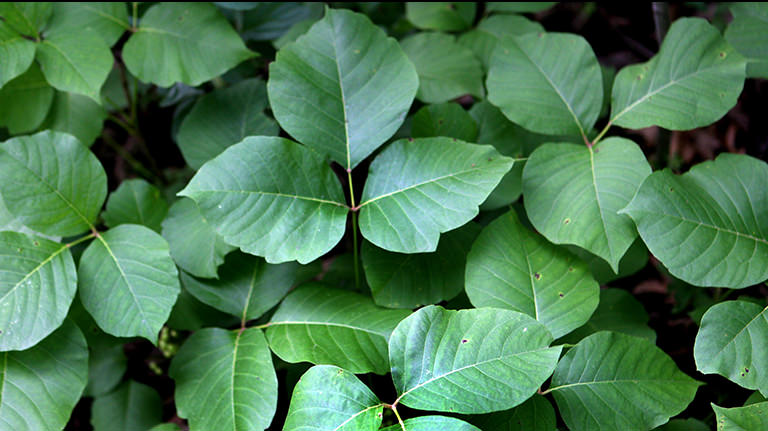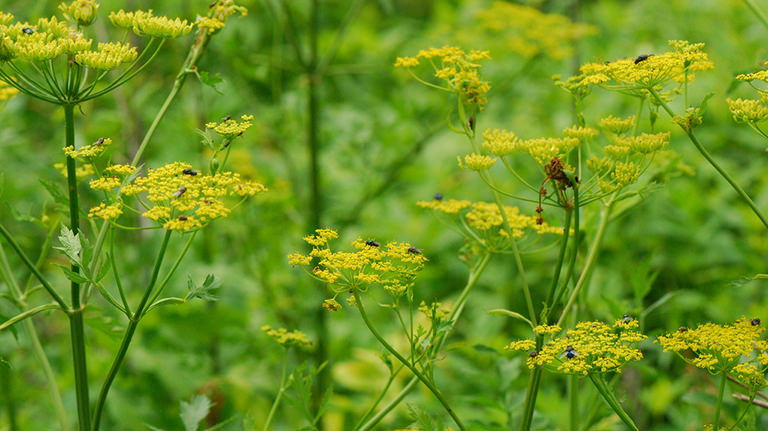The Rideau Trail is home to much wildlife – everything from chipmunks and beavers to bears and coyotes. Large carnivorous mammals may be frightening to some but did you know that some of the greatest dangers on the Rideau Trail come in the form of small insects or plants?
Ticks

Lyme disease is present in about 40% of ticks, an insect that you can find throughout the Rideau Trail. To prevent bites, wear long pants and a long sleeve shirt (Protip 1: light col ours help locate ticks before they bite) and after every hike, be sure to always check yourself (Protip 2: Ticks prefer warm areas like the back of your thighs or your armpits). RTA trail maintenance volunteers make efforts to keep tick habitat like tall grasses along the trail down to a minimum to help reduce the chance of getting bit. Interested in helping with trail maintenance? Email us at info@rideautrail.org. The Government of Canada has a good guide on removing ticks and submitting them for testing. The Government of Ontario also has a good page on Lyme disease. For more information on ticks or Lyme disease, we suggest contacting your doctor or your local public health unit.
Poison Ivy

Leaves of three…leave them be… Poison ivy (even the roots) contain a poisonous substance which causes an irritating inflammation of the skin of most people. You can usually identify poison ivy by three leaves with red stems. The leaves are typically green but are known to go red in the fall. No matter the season, this is a plant to avoid. The plant can climb trees but also spread along flat surfaces. The RTA has installed signs in areas where it grows more prolifically but knowing how to identify it yourself can protect you from an unpleasant experience. For more information, Canada.ca is a good starting point.
Wild Parsnip

This latest natural foe of the Rideau Trail actually forced a reroute of the trail in 2015. Although its root is actually edible, this yellow flowered plant can cause some serious burns and heighten your skin’s photo-sensitivity to sun (that means you’ll get sunburns more easily). Wild parsnip can grow quite tall and has reportedly caused temporary and even permanent blindness. Definitely don’t get this stuff in your eyes. For more information, consult the Ontario Ministry of Agriculture, Food & Rural Affairs.
Mosquitoes and Flies

Airborne, biting insects are kind of part of spending any time outside (motivation to hike quickly for some!) and they affect people to varying degrees. Ottawa’s first two cases of West Nile Virus occurred in 2016. The City of Ottawa has some interesting stats on the prevalence in this infection. You can avoid uncomfortable bites by wearing woven fabrics and using deet. American adventurer Andrew Skurka has some good strategies on not getting bit. The Friends of Algonquin Park also have some good information on what bugs to expect when. Hate mosquitoes with a passion and want to avoid the risk? Hike in the fall and winter! NOTE: Ticks have been found in the area on warm December days.
Hunting
As a precaution, hikers are advised to wear “hunter orange” hats and clothing in any situation in or near which hunting may be taking place. Dates should be confirmed by checking the hunting information at the Ministry of Natural Resources’ Website. Some hunting and trapping takes place year-round near the Rideau Trail but November is the primary hunting season in the area of the Rideau Trail (Wildlife Management Units 64 and 67). Some landowners close their section during hunting season and post signage to this affect. Please adhere to these signs.
Bears
Black bears are rarely but occasionally seen on the Rideau Trail. Remember that bears are a part of the natural environment and are not a nuisance. Bears should be respected: never purposely feed bears (or other wildlife) or try to approach them. For more information on preventing conflicts with bears visit the Government of Ontario’s Bear Wise Webpage.

Hello. This summer my wife and another couple plan to complete our hike from Ottawa to Kingston which we began last fall.
In fact, next week we plan a 10 km hike from Perth (10D) to Mackler Side Road (10A) using Map 10.
Is anyone aware if that portion of the trail is now usable? Cheers